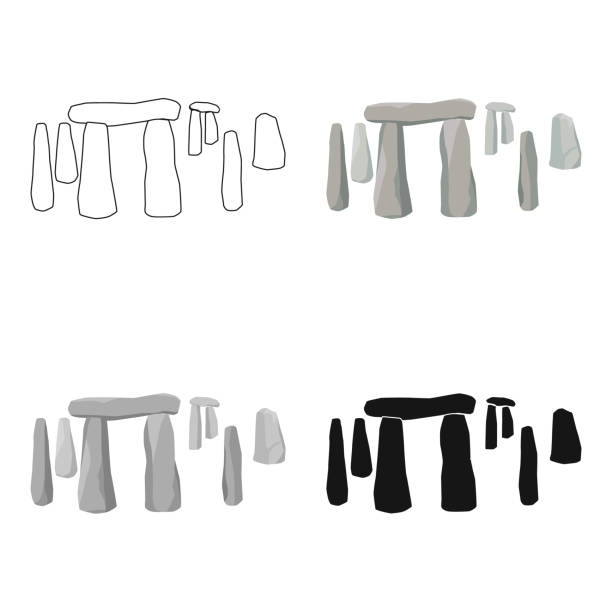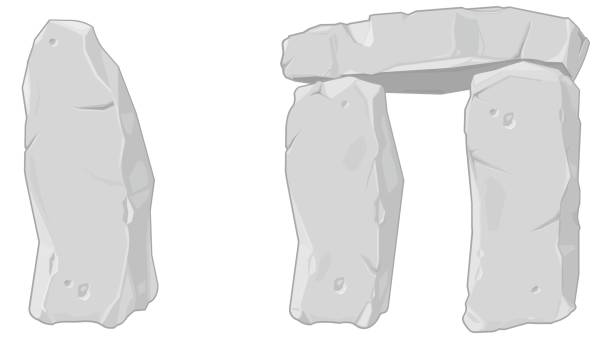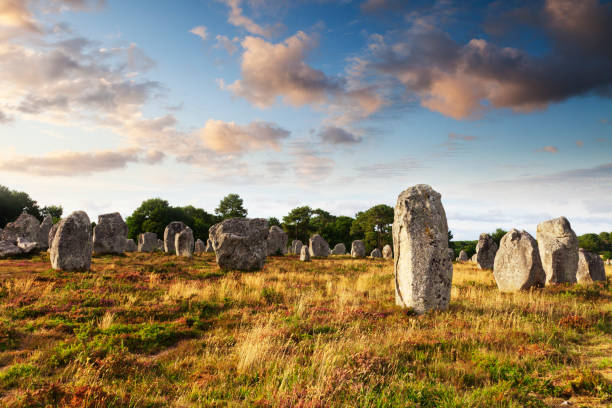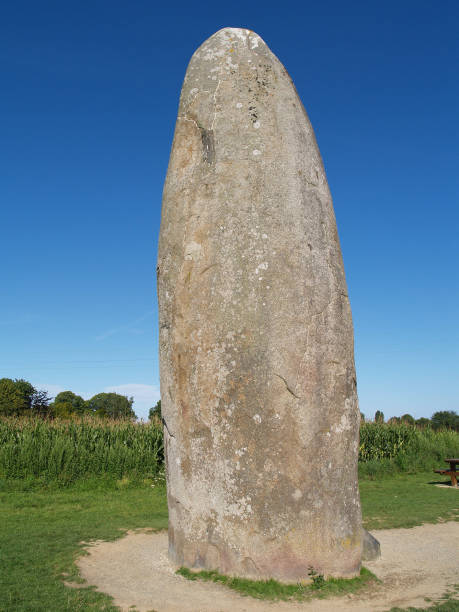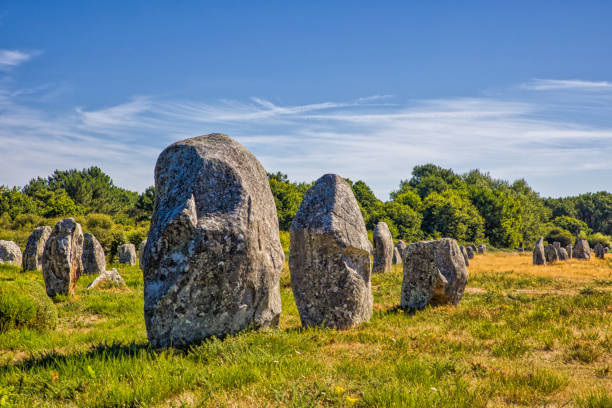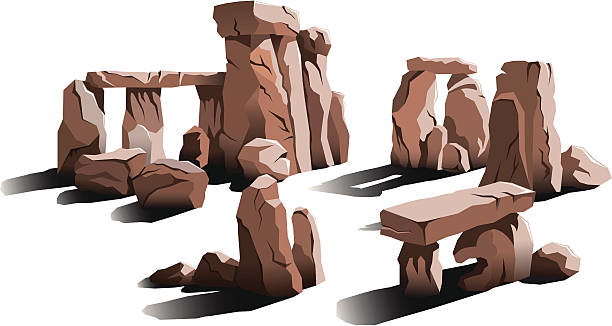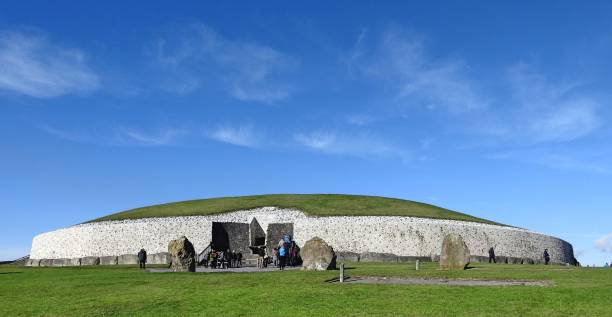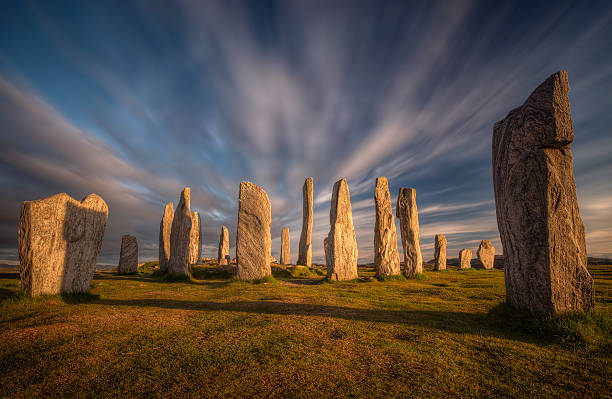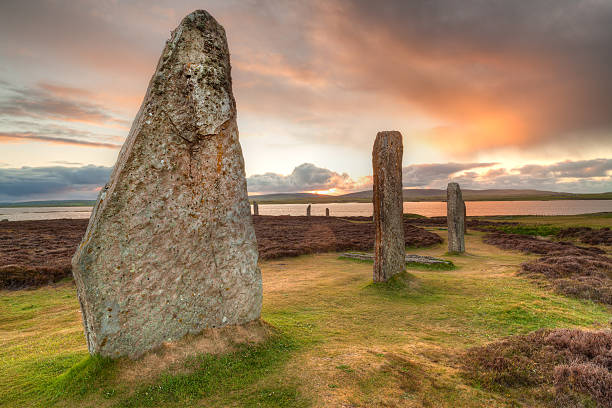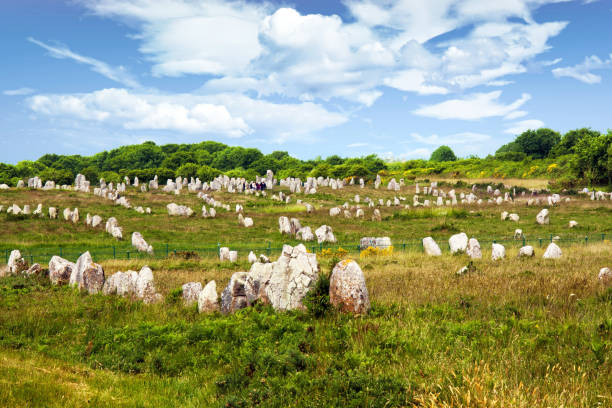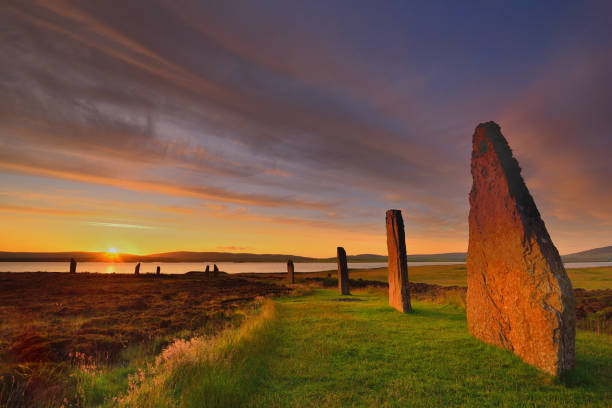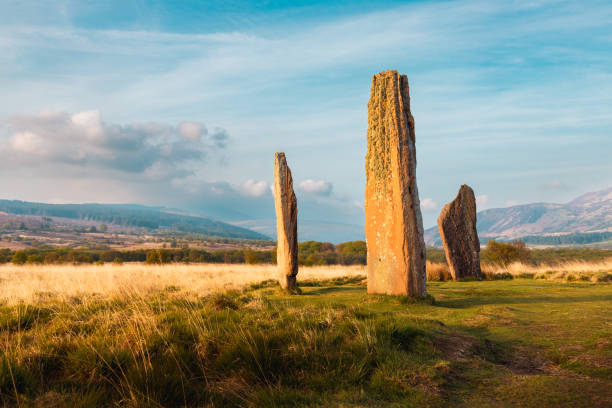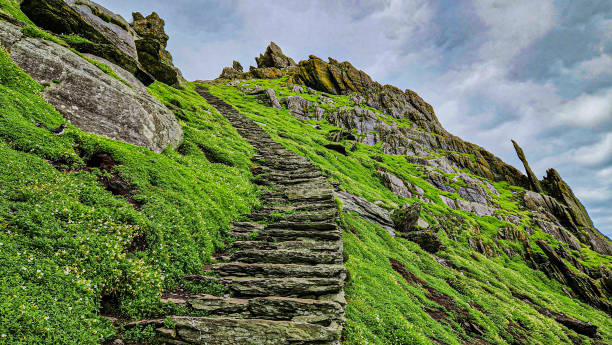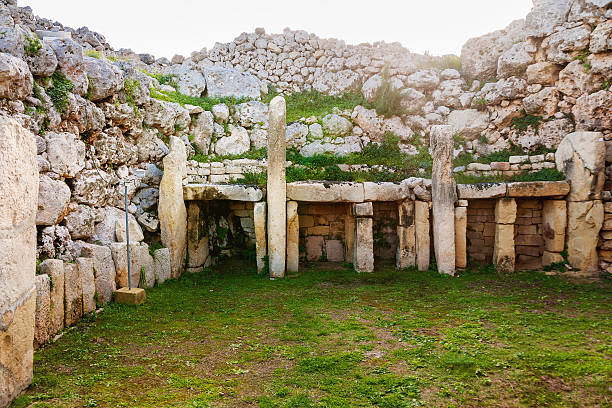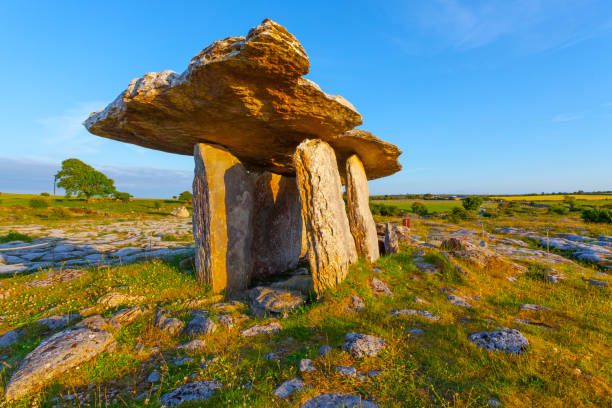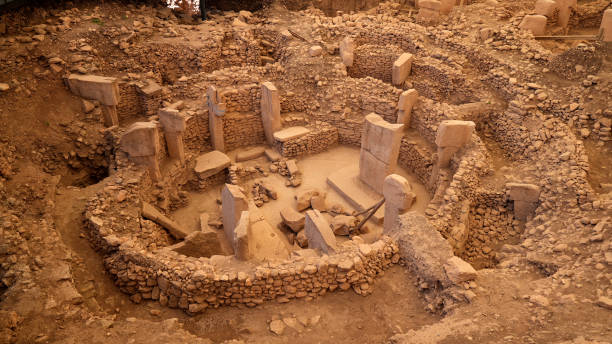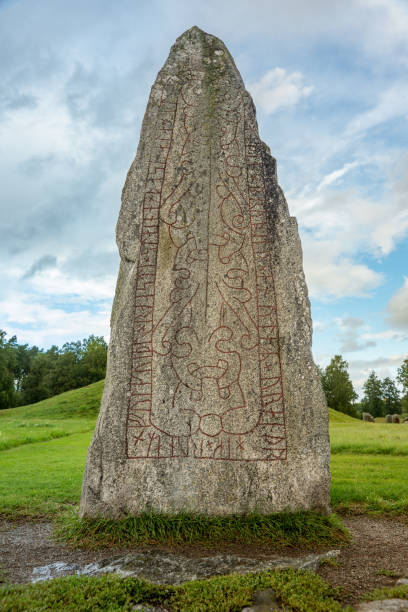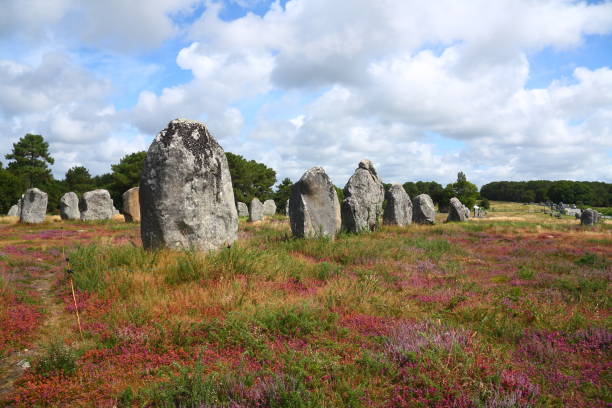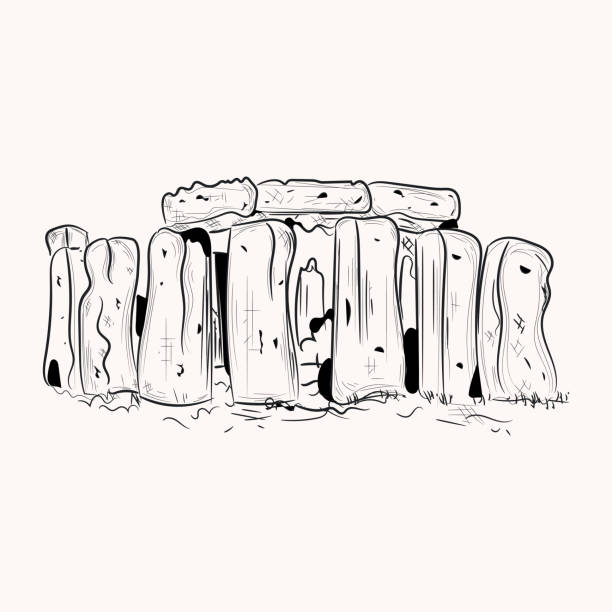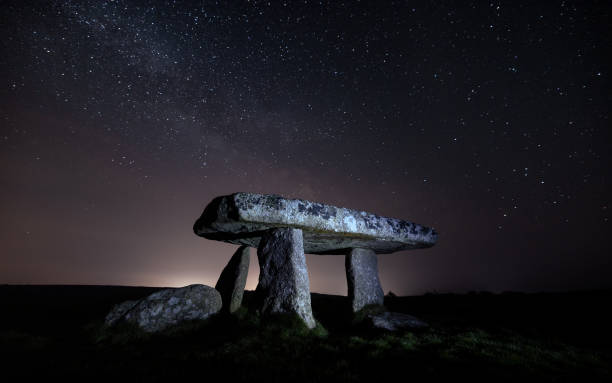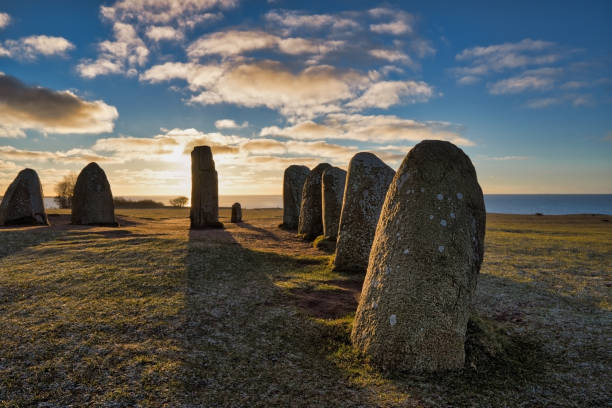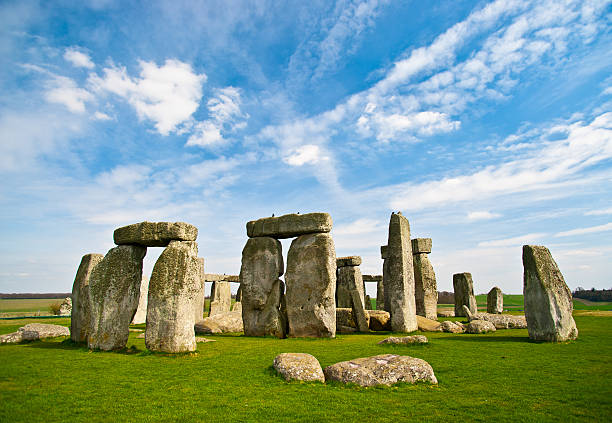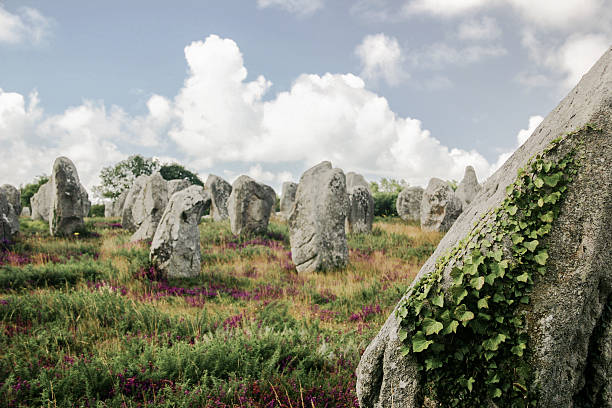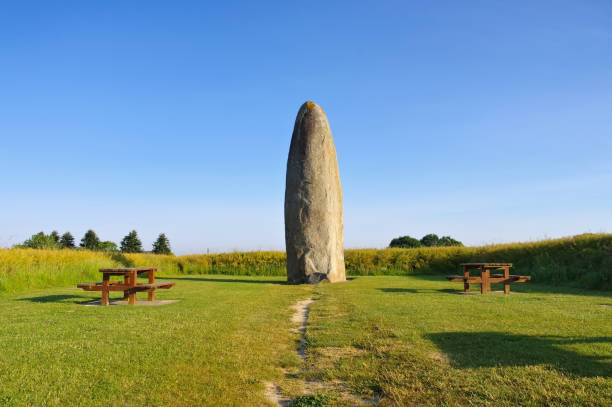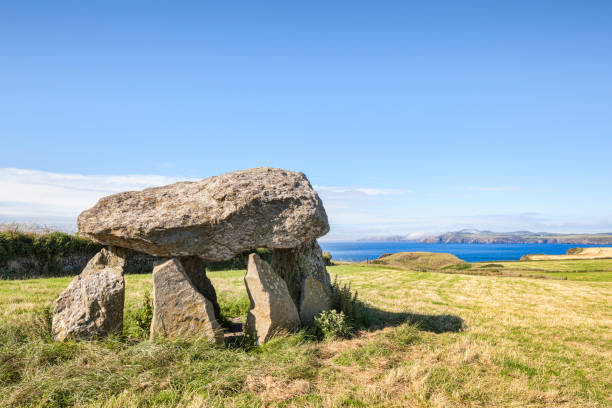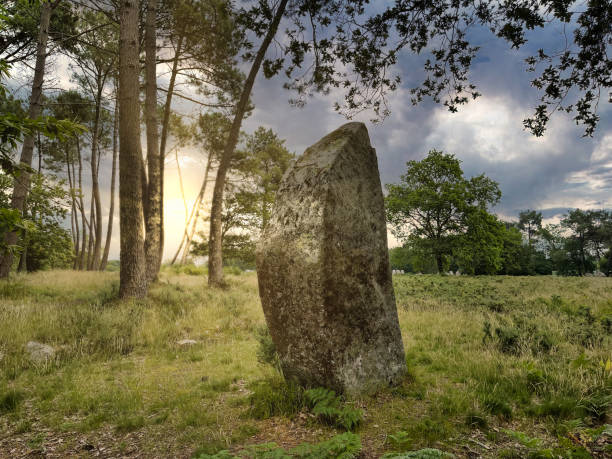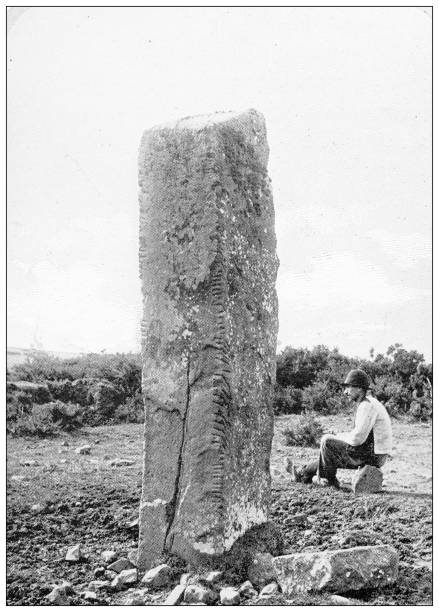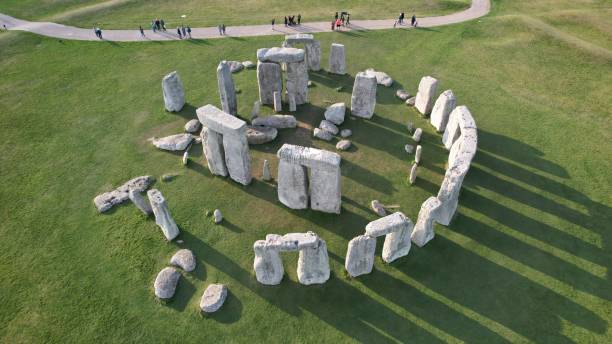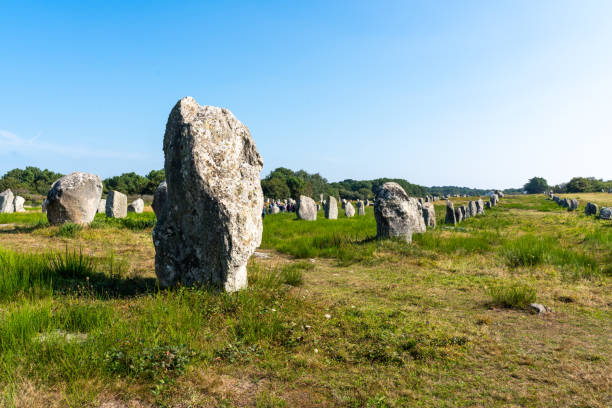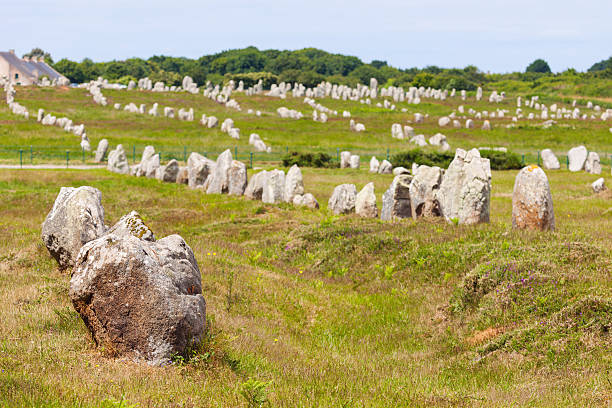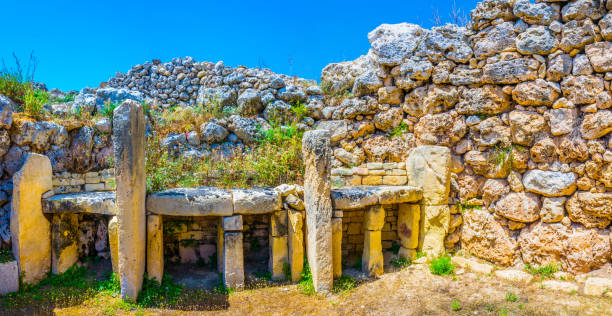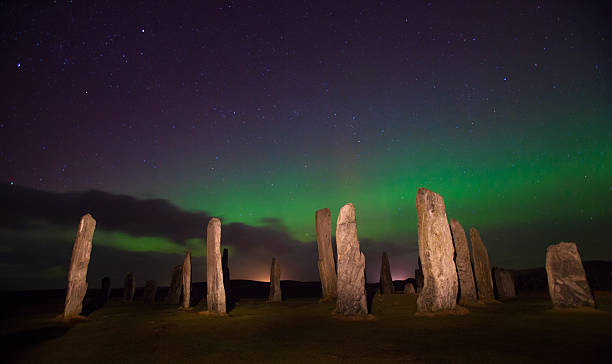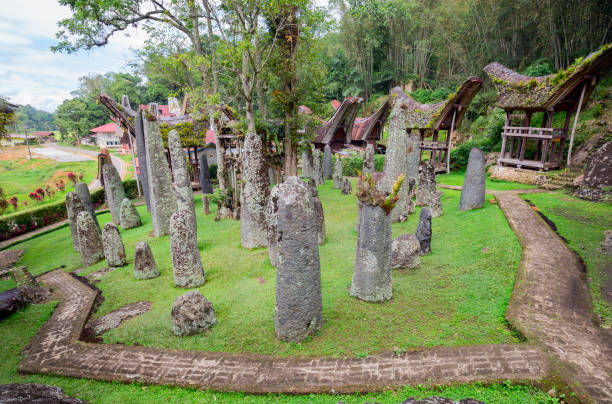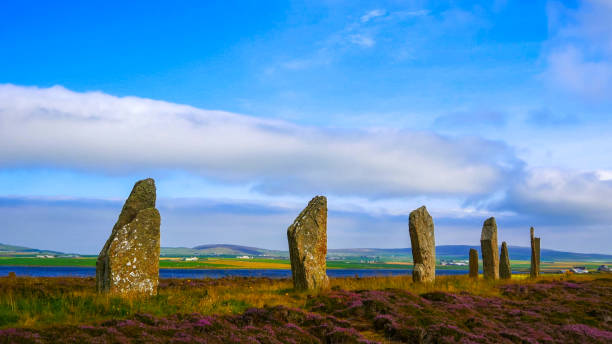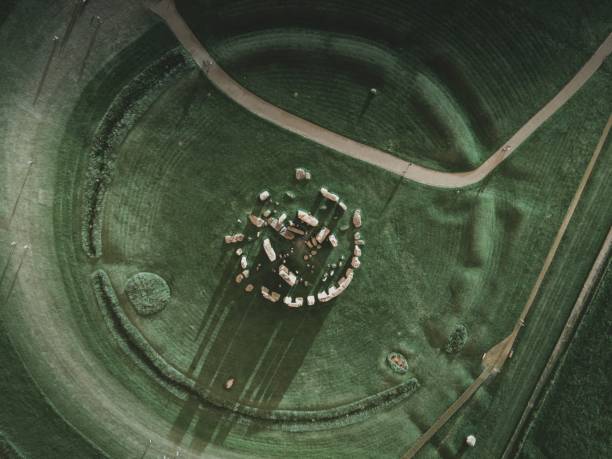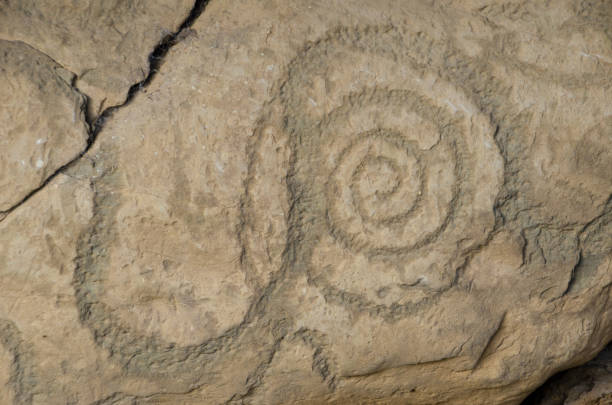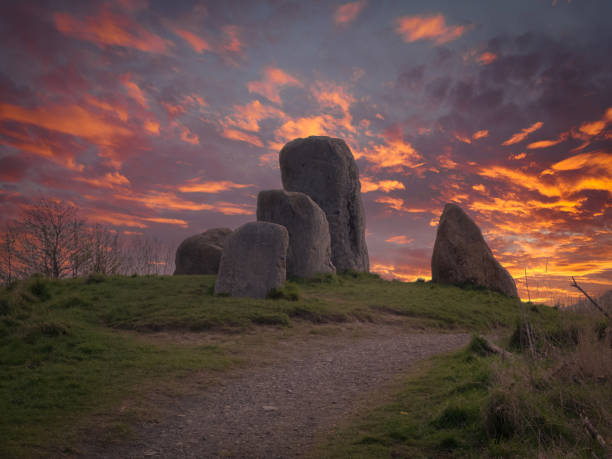
Megalith Pictures, Images and Stock Photos
Browse 35,300+ megalith stock photos and images available, or search for stonehenge or neolithic to find more great stock photos and pictures.

Callanish stones at sunset, Scotland
The ancient standing stones of Callanish (or Calanais) on Lewis in the Outer Hebrides of Scotland. Built about 5000 years ago, the deeply textured stones of Callanish are arranged in allignments of avenues and a central circle not unlike a celtic cross.
English stone monument icon in cartoon style isolated on white background. England country symbol stock vector illustration.
A vector illustration of ancient stone megaliths.
Some of the 3000 standing stones at Carnac, Brittany, France. It is believed that these stones were placed in position around 5000 years ago.
A menhir - Breton meaning stone and hir meaning long - is a megalithic monument composed of a single stone, cut or rough, small or large and placed vertically. Menhirs are also called monoliths. They can be arranged alone or in groups.
Menhir of Champ-Dolent near Dol-de-Bretagne
a touristic hot spot at brittany
The ancient standing stones of the Ring of Brodgar in the Orkney Islands off the north coast of Scotland, in the early morning just at sunrise. This monument in the heart of the Neolithic Orkney World Heritage Site is believed to have been built between 4000 and 4500 years ago. Originally built with sixty stones in a circle over 100 metres (over 100 yards) across, fewer than half of the stones still stand. The tallest of the stones is a little over 4.5 metres (15 feet) tall.
Ancient stones circle, a place of magic, vector illustration
18th October 2018, Co Meath, Ireland. Newgrange neolithic prehistoric stone age passage tomb mound.
The ancient standing stones of Callanish (or Calanais) on Lewis in the Outer Hebrides of Scotland at sunrise. Built about 5000 years ago, the deeply textured stones of Callanish are arranged in allignments of avenues and a central circle not unlike a celtic cross.
Easter Island Moai Statues at Rano Raraku under sunny summer sky. Rano Raraku, Rapa Nui National Park, Hanga Roa, Easter Island, Chile.
Callanish stones in sunset light, Lewis, Scotland
The ancient standing stones of Callanish (or Calanais) on Lewis in the Outer Hebrides of Scotland at sunrise. Built about 5000 years ago, the deeply textured stones of Callanish are arranged in allignments of avenues and a central circle not unlike a celtic cross.
Part of the Neolithic stone circle known as the Ring of Brodgar, on the Orkney Islands of Scotland just after dawn. The site dates back to between 2500BC to 2000BC and is part of a wider archaeological complex containing Skara Brae, the Stones of Stenness and Maeshowe.
Shooting in natural light at zoom 18/135, 200 iso, f 16, 1/125 second
Summer sunrise at the Ring of Brodgar in the Heart of Neolithic Orkney with the sun just breaking over the Loch of Harray. The stone circle dates back to between 2500BC to 2000BC and is part of the wider 'Neolithic Heart of Orkney' comprising Skara Brae, the Stones of Stenness, Maeshowe and the Barnhouse Stone.
Callanish henge on Isle of Lewis, Scotland
Machrie Moor Standing Stones, stone circle in golden evening light, Isle of Arran, Scotland
The standing stones of Castlerigg in the English Lake District
Flat design Stonehenge prehistoric site isolated icon
Neolithic megalith temple complex of Ggantija (Tempji Neolitici Tal-Ggantija, "Giant Tower") on the island of Gozo in Malta. UNESCO World Heritage Site.
Poulnabrone dolmen is a portal tomb, located in the Burren, County Clare, Ireland.
Mayan Pyramid, Maya Ruin in the famous Tikal National Park, Unesco World Heritage Site. Tikal, Guatemala, Central America.
Göbekli Tepe is an archaeological site from the Neolithic period. B.C. Dating to 9600-9500 BC, the area is one of the oldest historical buildings in the world.
Megalithic monument in Sardinia,Italy.
Close up low angle view of a large and a thousand year old rune stone in Sweden
Shooting of the Alignments of Carnac which are the most famous and impressive megalithic ensembles of this period with nearly 4,000 stones raised around 4500 YEARS BEFORE our era, at 18/135, 200 iso, f 16, 1/125 second
Alignment of prehistoric standing stones in Carnac, France. The stones were erected during the Neolithic period, around 3300 BC.
Get your hands on this realistic collection of famous unique building vectors with various architecture simulations. Make your project stand out with these hand-drawn designs that provide an easy-to-use interface. Using this kit will add massive value to your web, app, or presentation projects.
Situated in largely unpopulated and treeless Cornish landscape between Madron and Morvah, Lanyon Quoit, along with other Cornish dolmens, dates back to the Neolithic period (3500-2500BC), predating both the pyramids in Egypt and metal tools. The original use is somewhat disputed; some believing that it was the burial chamber of a large mound and others contesting that it was never completely covered, but rather used as a mausoleum and the imposing backdrop to ritual ceremonies, especially since it is believed that in its original form the quoit was aligned with cardinal points. Another theory is that bodies were placed on the capstone to be eaten by carrion birds. Nearby lie a number of small stone burial chambers, knows as cists, with a longstone about 100 yards north-west of the quoit and evidence that there were once a number of neighbouring barrows. Once tall enough to allow a horse and rider to pass underneath, Lanyon Quoit is certainly one of Cornwall’s most recognisable and important megalithic sites. The mammoth capstone, weighing over 13 tonnes and measuring 9 feet by 17 feet, originally sat atop four upright stones until a thunderstorm in 1815 dislodged it. Attributed in part to soil removal from numerous treasure hunting explorations, the fall broke one of the supporting stones, hence the diminished stature achieved when re-erected by local public subscription (incidentally, the equipment used to replace the capstone was that previously used to replace the Logan Rock).
Ales stenar megalithic monument near Ystad in southern Sweden, shadow of the biggest stone
The world famous prehistoric landmark and UNESCO World Heritage Site on Salisbury Plain, Wiltshire, England. A beautiful blue sky with fluffy clouds provides copy space above while bright green grasses below grab the viewer's attention.
Sunset light on the ancient standing stones of Callanish (or Calanais) on Lewis in the Outer Hebrides of Scotland. Built about 5000 years ago, the deeply textured stones of Callanish are arranged in allignments of avenues and a central circle not unlike a celtic cross.
Prehistoric megalithic monuments menhirs in Carnac area in Brittany, France.
Carreg Samson, a Neolithic dolmen grave on the Pembrokeshire coast of Wales, near Abercastle .
A vector illustration of ancient standing stone on a patch of green grass.
solitary neolithic standing stone Carnac Brittany France
The Stonehenge - No filter needed
Megalithic alignments from Carnac in France"r"n
Carnac stones in France. Carnac, Brittany, France
Flat line design style vector illustration icons set and logos of top tourist attractions, historical buildings, towers
Travel Landmark icon set and cultures, set of 16 editable filled, Simple clearly defined shapes in one color.
This image is a vector illustration and can be scaled to any size without loss of resolution.
An amazing natural phenomena, with this historic place of worship set against the backdrop of the Northern Lights in the night sky of Lewis, Outer Hebridies
Ring Of Brodgar, Orkney, Scotland. A neolithic stone circle and henge which is part of The Heart of Neolithic Orkney World Heritage Site.
Natural texture and background. The wall of the house is covered with white marble tiles.
Aerial view above stone henge, as the shadows are cast making it look like a sundial.
Filitosa,France - October 9, 2014: Menhirs in the megalithic archaeological site of Filitosa, Corsica, France. Filitosa is one of the major sites of Corsican Prehistory
A rock engraving from the passag tomb of the megalithic structure of Knowth in Ireland.
The standing stones at Cairnstone mound or hill which sits at the highest point of Eglinton in Irvine.

